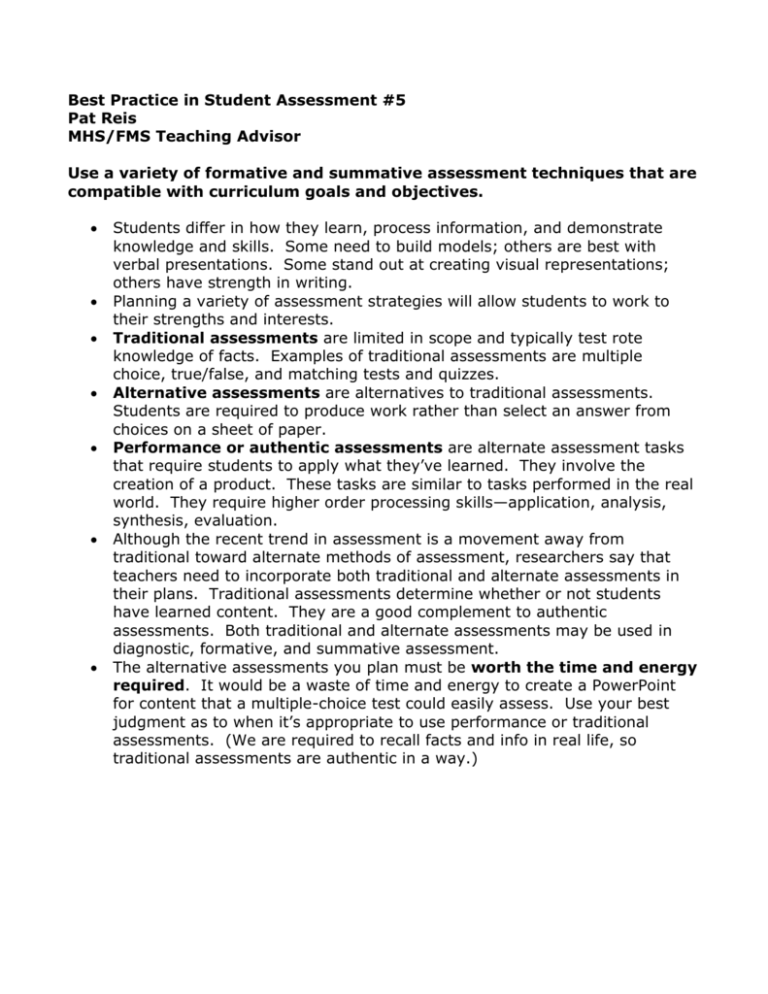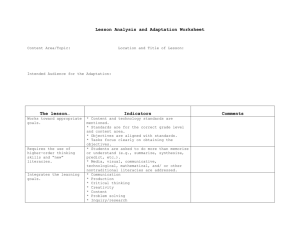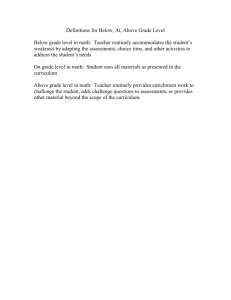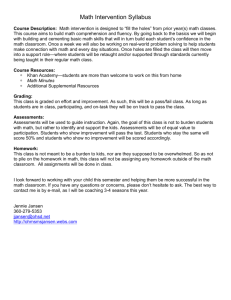best-practice-5-variety-of
advertisement

Best Practice in Student Assessment #5 Pat Reis MHS/FMS Teaching Advisor Use a variety of formative and summative assessment techniques that are compatible with curriculum goals and objectives. Students differ in how they learn, process information, and demonstrate knowledge and skills. Some need to build models; others are best with verbal presentations. Some stand out at creating visual representations; others have strength in writing. Planning a variety of assessment strategies will allow students to work to their strengths and interests. Traditional assessments are limited in scope and typically test rote knowledge of facts. Examples of traditional assessments are multiple choice, true/false, and matching tests and quizzes. Alternative assessments are alternatives to traditional assessments. Students are required to produce work rather than select an answer from choices on a sheet of paper. Performance or authentic assessments are alternate assessment tasks that require students to apply what they’ve learned. They involve the creation of a product. These tasks are similar to tasks performed in the real world. They require higher order processing skills—application, analysis, synthesis, evaluation. Although the recent trend in assessment is a movement away from traditional toward alternate methods of assessment, researchers say that teachers need to incorporate both traditional and alternate assessments in their plans. Traditional assessments determine whether or not students have learned content. They are a good complement to authentic assessments. Both traditional and alternate assessments may be used in diagnostic, formative, and summative assessment. The alternative assessments you plan must be worth the time and energy required. It would be a waste of time and energy to create a PowerPoint for content that a multiple-choice test could easily assess. Use your best judgment as to when it’s appropriate to use performance or traditional assessments. (We are required to recall facts and info in real life, so traditional assessments are authentic in a way.) Examples of Classroom Assessment Strategies (TA—Traditional Assessment, AA—Authentic Assessment): Selected Response (TA) Creative (AA) Performance (AA) Multiple-choice True-false Matching Fill-in-the-blank Label diagram Some homework formats Essay Story Poem Research report News article Forms of writing narrative expository Graph/table "Show your work" Concept maps Figural representation (Venn diagram) Journal response Poster Portfolio Interview Newspaper PowerPoint Work out solution to problem Comparison chart Learning log Student-generated test questions Notebooks Some homework formats Brochure Event planning Group activities and Discussions Book review/critique Verbal presentation Dance Lab activity/experiment Athletic skill Dramatization Enactment Project Debate Model Exhibit Musical recital Solve a mystery Simulation Speeches Skits Mock trials Group activities and discussions A competition






